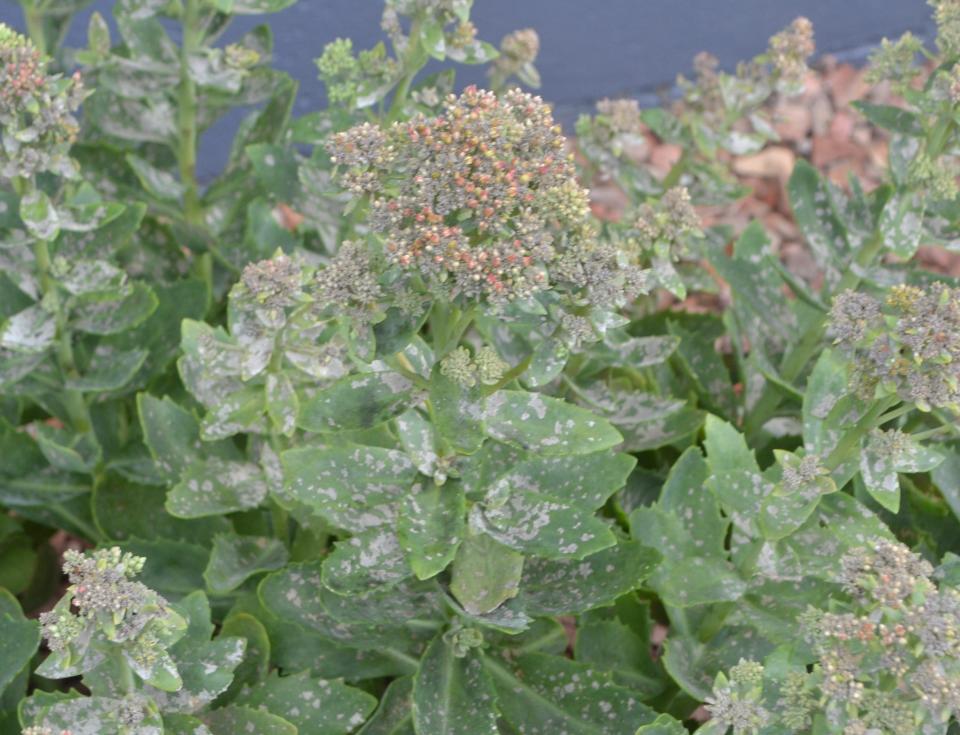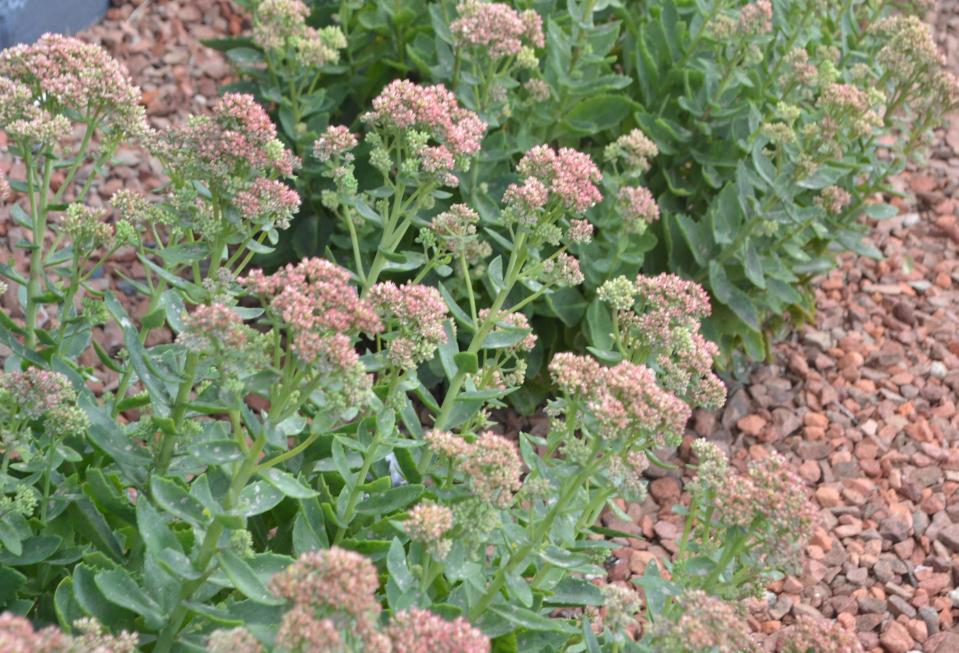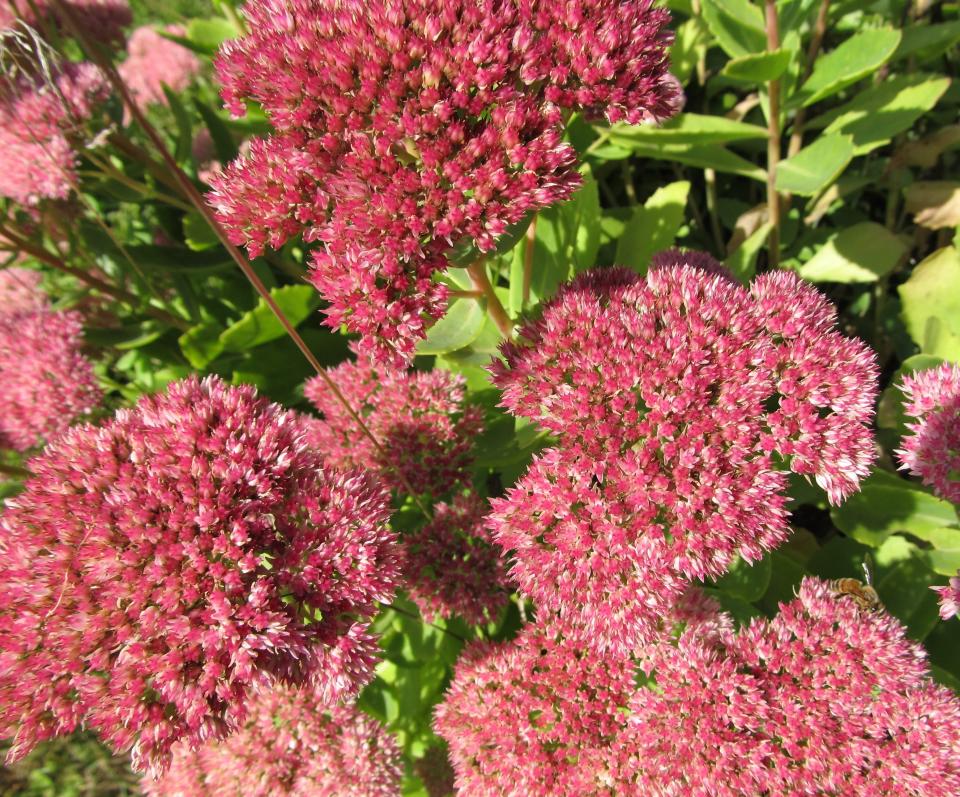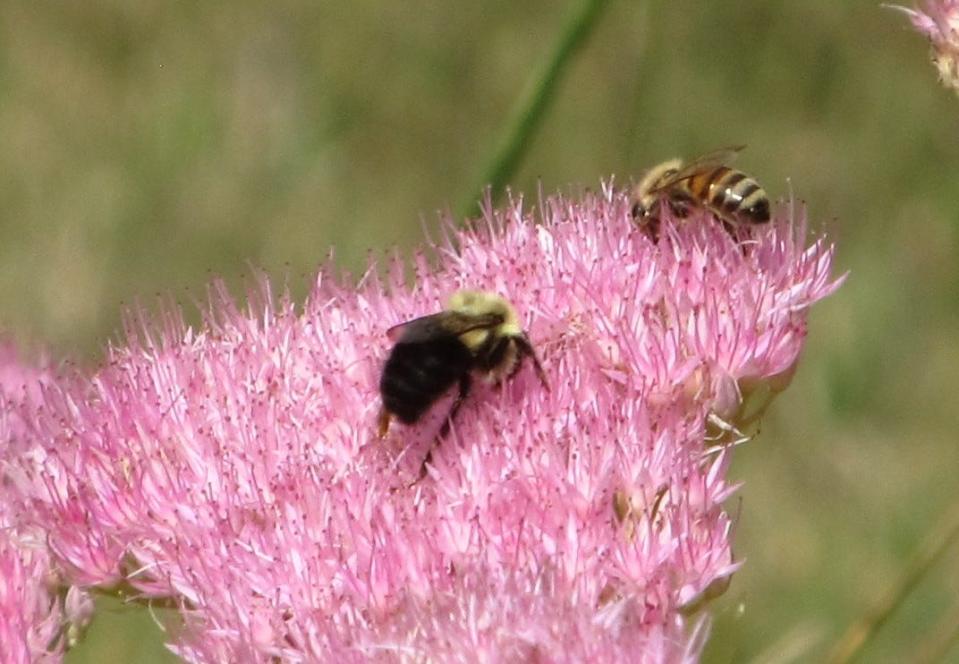A Stroll Through the Garden: Gray powder on sedum
I got an email this past week from a reader which had a question that I have not seen very often — at least not very often on this plant. The question I got was very strange in that only a part of the yard was infected by this disease and not the other. The one part of the yard where the sedum was growing well was doing great just like normal years, according to my reader.
I arrived at my reader’s home and took a look at these unusual plants. This gray powder had truly infected the plants in the front of the house. The homeowner hadn’t seen any gray powder on any of the sedum at the side of the house. One takeaway from this situation is that each plant needs to be diagnosed separately. If the infection continues, you need to look at stronger solutions.

Seems that over the years I have installed hundreds of sedums from Lake Erie to Lexington and Galion to Kent. I have always found sedum to be a bullet-hard plant that has so few problems that I don’t think I've ever had to replace any over the 20-plus years of installing them. I don’t recall ever having to treat any sedum with any kind of pesticide. At least for me, sedum has been one of those plants that you put in the ground and forget it.
Powdery mildew is a fungal disease. There are many different species of ascomycete fungus in the order Erysiphales — powdery mildew that has many different characteristics and one of the easier to identify. Most of the time infected plants display white to gray powdery spots on the leaves and stems. The lower leaves are usually the most affected, but mildew can appear on any above-ground part of the plant. As the disease progresses, the spots get larger and denser as large numbers of asexual spores are formed, and the mildew may spread up and down the length of the plant. The three most common powdery mildew species are Erysiphe sedi, E. umbilici, and E. orontii (now with the name Golovinomyces orontii) and the most common North American species is Erysiphe sedi. Most sedum plants are very resistant to any species of powdery mildew except for sedum "Matrona" which is very susceptible to this disease.

Here is the real key to this disease. Powdery mildew grows well in environments with high humidity and moderate temperatures and still or no air flow. The challenge is if you have one infected plant in a line of sedum plants and you have a slight breeze, the breeze itself will spread the disease and continue the infection. One of the reasons that I have not seen this disease is that I selected varieties of sedum that were not susceptible to the disease, which is a solid solution to not getting the disease. You can be creative by alternating between this sedum "Matrona" and resistant sedum in the next design. By increasing distances between the susceptible plants, you will also reduce the chances of this plant getting the disease. More sun, well-drained soil, and a sweet soil increases the chance for the sedum not to catch powdery mildew.
Good sanitation practices go a long way in solving this disease by removing all affected material and placing it in the trash. Purchase sedum varieties that are not susceptible to powdery mildew. Improve air circulation, sunshine, soil drainage, and sweeten the soil near the susceptible plants.

Conventional fungicides can be found at any garden shop. Amongst the list of conventional fungicide chemical control of this disease are triadimefon and propiconazole — the normal fungicides that are labeled for this disease in this plant. Control of powdery mildew applied on a regular schedule should provide the best results. Please, if you are going to use a fungicide, make sure that you follow the labeled directions.
There are a number of nonconventional chemical controls that should be applied properly. Amongst the list of these nonconventional methods are milk, natural sulfur, potassium bicarbonate, metal salts and oils. Neem oil applied in a labeled method will interrupt the fungus metabolism and terminates spore production. A mix of sulfur, fish oil and sesame oil will accomplish the same purpose.
Milk is a popular use by organic gardeners to kill powdery mildew. Mix milk to a 1:10 ratio with water and spray on your susceptible plants at the first sign of infection. If you see weather forecasts of hot and humid days, you can use this spray as a preventative or spray weekly. Studies have shown that this milk spray can be an effective way to control powdery mildew in many different plants. Sodium bicarbonate in a diluted mix of vegetable or mineral oil in water can also control powdery mildew. Forget using sodium bicarbonate and water alone; it won’t work.

Have a great stroll through your garden this week. If you see a challenge let me know at ericlarson546@yahoo.com, I shall do the best I can to help. Soon I shall leave a link to the blogs that I’m writing at ohiohealthyfoodcooperative.com. Thank you for your participation in our column.
Eric Larson of Jeromesville is a veteran landscaper and gardening enthusiast and a founding board member of the Ohio Chapter of Association of Professional Landscape Designers.
This article originally appeared on Mansfield News Journal: Controlling powdery mildew on sedum plants

